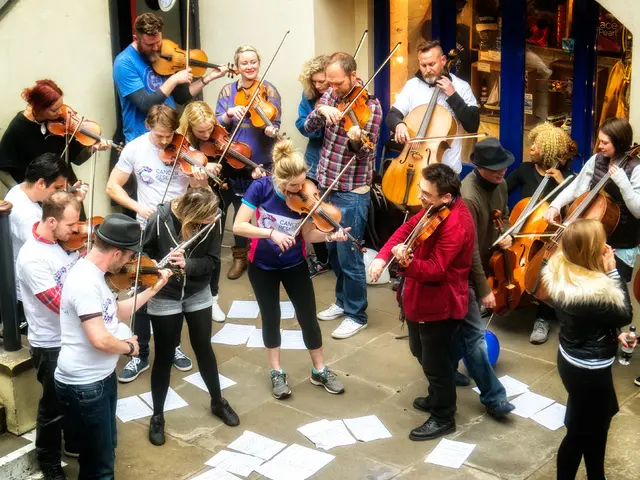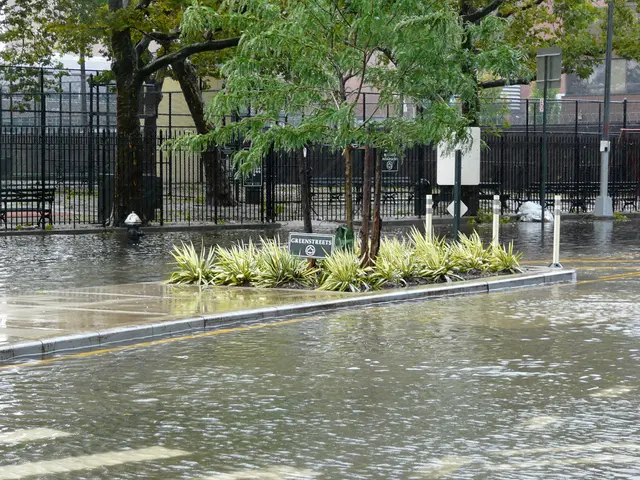Long-Term Impact: COVID-19 Reshaping Healthcare and Society After Half a Decade
Reminiscing about the days when everything changed
It's been five years since the COVID-19 pandemic wreaked havoc on our world. At first, we were told we just needed a couple weeks off school - little did we know that two weeks would stretch into almost two years of lockdowns! I'll never forget staring out my window, yearning for the outdoors, as the once vibrant city I loved grew dim and lifeless.
Fast forward to present day, and I find myself reflecting on how the pandemic reshaped healthcare, education, society, and our daily lives.
In the healthcare field, hospitals around the globe struggled to keep up with the immense demand for medical resources, such as hospital beds and ventilators. A study showed that "COVID-19 increased the demand for medical equipment and supplies, and disrupted many supply chains"[1]. As more and more patients flooded hospitals, many were unable to receive adequate care due to a lack of resources.
And it wasn't just about supplies - healthcare workers themselves faced incredible challenges. I managed to score an interview with an anonymous nurse from Westchester Medical Center, who gave me some insight into the hardships faced by healthcare workers during COVID-19. "Healthcare workers experienced immense stress, leading to difficulty concentrating and changes in sleep patterns", the nurse said. With an unprecedented number of patients to care for, healthcare workers found themselves working lengthy, stressful hours.
What's more, many nurses fell sick due to fatigue and exposure to the virus. Due to staff shortages, the remaining nurses were left dealing with even more pressure, which led to a reduction in the quality of patient care[1].
Five years later, we're still grappling with these issues. Healthcare costs have skyrocketed, and nurses are still recovering from the effects of COVID-19[1].
But healthcare wasn't the only sector impacted by the pandemic. Teachers and students also had to adapt to the sudden changes. I remember making the switch from in-person learning to being cooped up in my bedroom on Zoom. The unstable internet connection was always giving me trouble, causing me to get kicked out of meetings and struggle to focus.
Talking to Daniela De Silva, a math professor at Columbia University, I learned that many top students were also struggling. "Many of these students admitted that, having completed the course in an online format, they did not fully grasp the material and felt disengaged", said De Silva. Losing the social aspect of the classroom and being surrounded by background noise made it difficult for students to stay engaged in their learning.
The pandemic also took a toll on students' mental health. "Many students assumed that lecture recordings could fully replace in-person classes, leading them to believe attendance was unnecessary", said De Silva. This mindset led to a significant increase in student absenteeism[2].
But there were positive impacts too - online resources like Khan Academy and YouTube helped students supplement their learning when in-person resources weren't available[2].
And it wasn't just school that was affected. Being stuck inside all day for an extended period left many of us feeling empty and unfulfilled. I remember longing to step outside and feel some semblance of normalcy once more.
Nabil Majumder '26 shares my sentiment. "Going from living in constant fear to now being able to be free", he said.
Five years on, it's still hard to believe that the pandemic was just five years ago. It forever changed our lives, forcing us to adapt and find new ways to cope. But it also taught us valuable lessons about resilience and the importance of appreciating our loved ones.
References:
[1] "COVID-19 increased the demand for medical equipment and supplies, and disrupted many supply chains", study conducted by the World Health Organization
[2] "Estimated 26 percent of public school students were considered chronically absent last school year, up from 15 percent before the pandemic", New York Times
Show Tags
- covid-19
- healthcare
- pandemic
- school system
- society
- In the midst of a changed culture, photography captured the dim and lifeless cityscape, providing a visual record of the pandemic's impact.
- The demands for mental health resources escalated during the pandemic, with individuals seeking online video-based therapy sessions to cope with the stress and anxiety caused by the unsettling circumstances.
- Editorial pieces addressed the impact of chronic diseases like chronic kidney disease, Alzheimer's disease, and neurological disorders on public health during the pandemic, highlighting the need for extensive research and medical-conditions management strategies.
- Science-focused publishing platforms delivered detailed information on chronic diseases, offering practical advice on fitness-and-exercise routines, nutrition, and self-care to promote health-and-wellness among readers.
- As education shifted online, various education-and-self-development platforms provided numerous online courses on lifestyle topics like personal growth, mindfulness, and family dynamics to address the learning needs of people in lockdown.
- Simultaneously, the pandemic exposed relationship challenges faced by individuals confined to their homes, creating a surge in demand for professional guidance on relationship therapy and development.
- In response, some platforms offering online relationship counseling sessions and educational materials became more accessible and popular, encouraging personal growth and self-awareness in a digital environment.
- Further, the pandemic underscored the importance of mental health, with many now prioritizing mental health resources over luxury goods and experiences.
- Given the new normal of working remotely and staying connected virtually, many individuals embraced online education as a means of lifelong learning, focusing on professional development and career advancement opportunities.
- Moreover, health advocates emphasized the role of mindfulness, advocating for mindfulness exercises and meditation as essential tools for managing stress and navigating the challenges posed by the pandemic.
- With the lessons learned from the pandemic, we are left to grapple with a reshaped society, culture, and personal lives, forever changed by the impact of the global health crisis.







